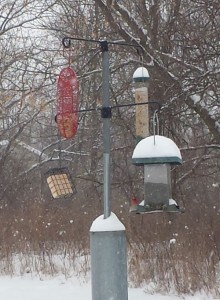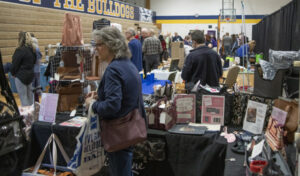
(Chelsea Update would like to thank Jennifer Fairfield, owner of The Garden Mill, for the information in this column. Part 1 ran yesterday.)
Bulbs
One good thing about the snow that we got is that, because the ground wasn’t frozen when it snowed, the snow acted like a blanket when the nighttime temperatures dropped into the teens immediately after. That kept the ground from freezing, and means that the procrastinators (like me) can still plant bulbs.
I just finally got my garlic planted this weekend. It’s the latest I’ve ever done that, but it was still so warm, and I didn’t want it to start growing yet, so was waiting for it to cool down (that’s one of my excuses, anyway).
I’m going to plant more crocus, too. I just love how cheerful and optimistic crocus are in the spring. If you’re still thinking of planting any spring-blooming bulbs, we’ve got them on sale at the store. Bulbs can be planted all the way up until the ground is frozen.
Snow and birds
My favorite thing to do when it’s snowing out is to watch the birds at my feeders. They are busily flying back-and-forth between the feeders and trees, and their colors show up so beautifully against the snow (especially the cardinals) Keep your feeders full, so you can enjoy the show, and so that the birds don’t have to go searching for food, which is hard to find under snow.
Be sure to clean your feeders out frequently. Feeders can spread disease, so cleaning them out is important. One disease that affects some of the birds coming to our feeders is House Finch eye disease. It appears to spread easily from sick birds to other birds as they visit our feeders, and can be deadly to them.
House Finches are the birds most often affected, but it has also been seen in Goldfinches and Purple Finches.
The Cornell Lab of Ornithology has these recommendations for feeding:
- Space your feeders widely to discourage crowding.
- Clean your feeders on a regular basis with a 10 percent bleach solution (1 part bleach and 9 parts water) and be sure to remove any build-ups of dirt around the food openings. Rinse well, and allow your feeders to dry completely before rehanging them.
- Rake the area underneath your feeder to remove droppings and old, moldy seed.
- If you see one or two diseased birds, take your feeder down and clean it with a 10 percent bleach solution. You may also want to remove feeders for a few days to encourage sick birds to disperse.
- Clean out your birdhouses, and leave them out for the winter, as long as they aren’t susceptible to breaking in the cold. An empty birdhouse can provide birds a place to huddle together to keep warm at night.
- Put out a heated birdbath, or put a de-icer in your existing birdbath, so that your birds have a source of fresh water all winter. Water is as essential as food, and becomes much harder to find in the winter.













